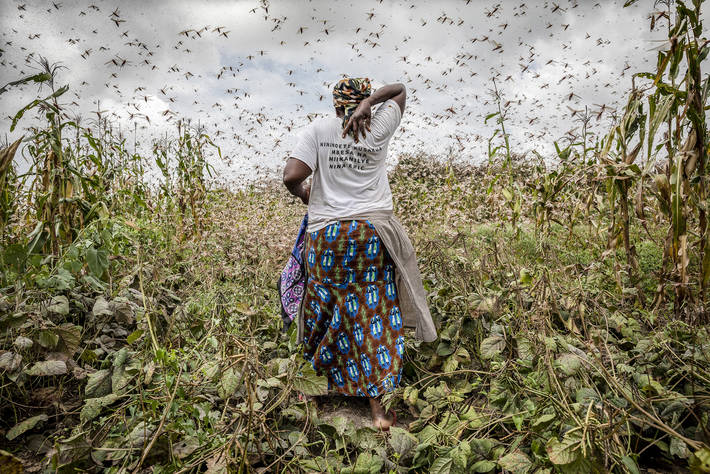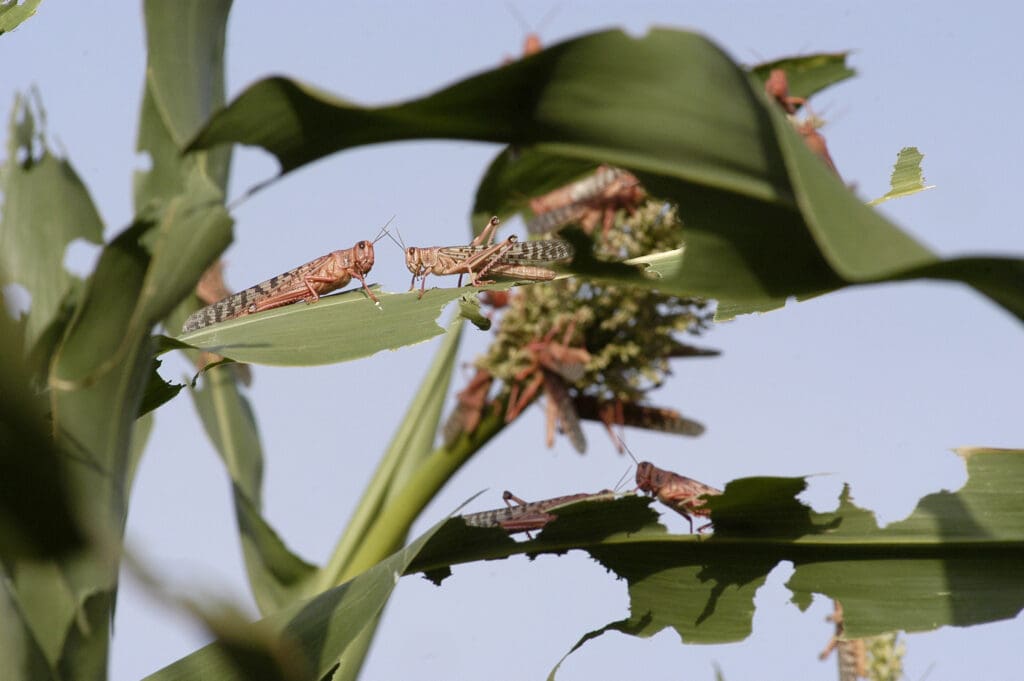Locusts in East Africa: A Race Against Time

Joint statement by QU Dongyu, Director-General of the Food and Agriculture Organization of the United Nations (FAO); Mark Lowcock, United Nations Under-Secretary-General for Humanitarian Affairs and Emergency Relief Coordinator; and David Beasley, Executive Director of the United Nations World Food Programme (WFP).
East Africa is a region beset by climate- and conflict-related shocks. Millions of people are already acutely food insecure. Now they face another major hunger threat in the form of desert locusts.
The locust upsurge affecting East Africa is a graphic and shocking reminder of this region’s vulnerability. This is a scourge of biblical proportions. Yet as ancient as this scourge is, its scale today is unprecedented in modern times.
On January 20th, FAO called for $76 million to help combat this pest crisis. But the resources to control the outbreak have been too slow in coming.
Since FAO launched its first appeal to help what was then three affected countries, the locust swarms have moved rapidly across vast distances and the full extent of their massive scale has become clear. Since our last op-ed pleading for action on February 12th, swarms have been sighted in Djibouti, Eritrea, South Sudan, Uganda and Tanzania.

Each day, more countries are affected. Last week, a swarm crossed into one of Africa’s most food-insecure and fragile countries, South Sudan. Just this week, it was confirmed that one swarm reached the eastern boundaries of the Democratic Republic of the Congo – a country that has not seen a locust incursion since 1944. Needless to say, the potential impact of locusts on a country still grappling with complex conflict, Ebola and measles outbreaks, high levels of displacement, and chronic food insecurity would be devastating.
As the locusts continue their invasion throughout eastern Africa, and more details emerge about the scale of need in affected areas, the cost of action has already doubled to $138 million. FAO urgently needs this money to help Governments control these devastating pests, especially in the next four months.
This funding will ensure that activities to control the locusts can take place before new swarms emerge. It will also provide help for people whose crops or pastures are already affected, to protect their families and their livelihoods.
Desert locusts have a reproduction cycle of three months. Today, mature swarms are laying eggs within vast areas of Ethiopia, Kenya and Somalia, many of which are already hatching. In just a few weeks, the next generation of the pests will transition from their juvenile stage and take wing in a renewed frenzy of destructive swarm activity. This will be just as farmers’ crops begin to sprout.
The next wave of locusts could devastate East Africa’s most important crop of the year, right when it is at its most vulnerable.
But that doesn’t have to happen. The window of opportunity is still open. The time to act is now.
Anticipatory action to control and contain the locusts before the new swarms take flight and farmers crops first break soil is critical. At the same time, FAO needs more resources to immediately begin boosting the resilience of affected communities so they can better withstand some inevitable shocks. Acting now to avert a food crisis is a more humane, effective and cost-efficient approach than responding to the aftermath of disaster.
We welcome the response so far from many international donors. To date, $33 million has been received or committed. But the funding gaps are clear, and needs are growing too rapidly. We need to do more. WFP has estimated the cost of responding to the impact of locusts on food security alone to be at least 15 times higher than the cost of preventing the spread now.
It is time for the international community to act more decisively. The math is clear, as is our moral obligation. Pay a little now, or pay a lot more later.
# # #
The United Nations World Food Programme – saving lives in emergencies and changing lives for millions through sustainable development. WFP works in more than 80 countries around the world, feeding people caught in conflict and disasters, and laying the foundations for a better future.
Stay up to date @WFPUSA




